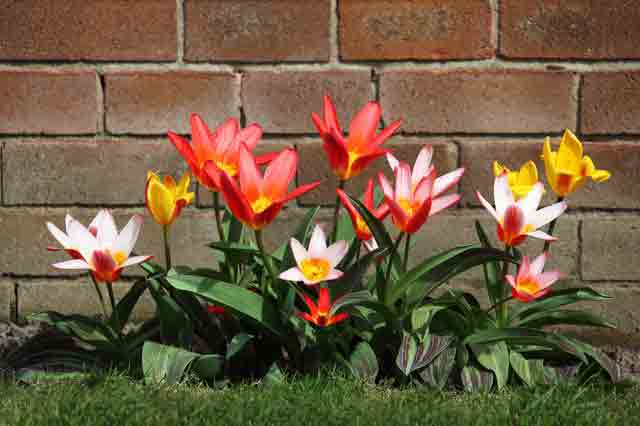As the seasons change, and the rusty coloured leaves drop from branches, and an autumnal sunshine fills the air, it signals time to don your wellies and get into the garden before the cold weather fully takes hold.
Taking the time to keep on top of maintenance tasks now will ensure that your garden remains healthy through any rain, wind, frost, and snow that may occur during the autumn and winter months.
We’ve spoken to Olive Grove Oundle to get their advice on what you should be doing in your garden this month.
1. Protect Young and Tender Trees and Plants

Young and sensitive trees and plants need to be protected from cold weather elements to avoid damage which is often irreparable and leads them to die. This means that you will need to either move them indoors to a shed, garage or conservatory or use horticultural fleece to provide adequate protection.
Olive trees, in particular, will need some form of protection, as while they are able to withstand temperatures of minus 10, cold wins can be particularly damaging.
2. Rake Leaves Continually
As the leaves begin to drop, they will soon fill up your garden and pathways. You should try to rake them up as much as possible so that it doesn’t become a task which is too hard to contend with.
By raking and disposing of leaves every few days you will keep on top of the job and avoid them from becoming a nuisance.
3. Collect Seeds for Next Year
Taking cuttings from your garden this year is a cost-effective way to have seedlings to plant next year.
As a rule of thumb, seeds pods should be ripe when picked (they will look papery and brown) and placed into an envelope, and then an airtight tin in a fridge or cold shed.
5. Plant Bulbs

A little prep work now will ensure that your garden is full of colour when the first sunshine of spring makes an appearance.
Daffodils, tulips and crocus bulbs can all be planted before the first frost and will provide you with pops of colour. Plant in groups or dot along borders for a more informal, country-garden look.
6. Cut Back Perennials
If left unattended, perennials can soon rule your garden beds, therefore cutting them back can help to prevent this from occurring.
Not all perennials will need cutting back so do your research before you have your secateurs in hand, and only cut stems to the base of the plant, removing any weeds surrounding the plant as you go.
Every two to three years herbaceous perennials should be divided to ensure they remain healthy.
7. Greenhouse Maintenance
Your greenhouse will be used as a protective shelter through autumn and winter. Therefore, you need to ensure that it is a hospitable place for you to store your plants.
If you have used shade paint in the summer, then this will need to be removed with some hot water to maximise the light that enters the greenhouse. You should also thoroughly clean the space and leave it to air for a few days, before replacing plants which were in there previously and any new additions.
8. Harvest Fruit and Vegetables

Now is the time to harvest your fruit and vegetables and eat the seasonal produce that you have grown with your own fair hands. Beans, peas, squashes, pumpkins, and cabbages are all ready to be picked, as are apples and pears.
It’s also a good time to cut back summer fruit trees to encourage next year’s crop.
Bail, parsley, dill and chives should be sown now so that they can grow throughout winter on a windowsill, and winter salad leaves can be sown and placed in a greenhouse throughout winter also.
9. Weeding
Removing weeds is one of those pesky tasks that all gardeners have to contend with, but keeping on top of it will ensure that it does not become a mammoth task that requires attention.
Clear the grass, flower beds and weeds which appear in patio cracks with weed killer and a weeding tool which allows you to remove weeds from small, hard to reach gaps.
Extra tip: Prune Climbing Roses
If left unattended, climbing roses can become tangled and will not flower the following year.
Once the flowers have faded, in-between December and February is the time to begin pruning. Once the leaves have dropped is the best time, as it gives you a better idea of where it needs to be pruned and shaping requirements.
Dead, diseased and dying branches should be removed, and if branches look congested, these should also be cut back to encourage new growth.
Putting in the hours now will ensure that come spring you have a garden which is well-maintained and ready for you to begin your warm-weather tasks.